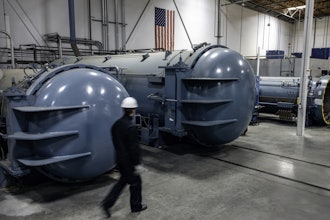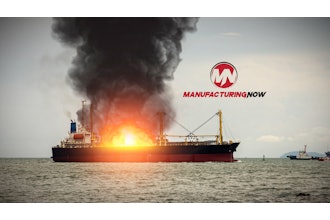Are you failing to tend to what’s right underneath your feet? Though concrete freezer floors can last up to more than half a century, the underfloor heating system beneath still requires regular preventive maintenance. If you don’t take the proper precautions, frost can form in the sub-grade soils resulting in raised, cracked floors and a host of potential problems, including: safety concerns, operational issues and significant structural damage.
How does frost heave occur?
Soil underneath your freezer floor must be heated, ensuring it remains above freezing temperature. This is achieved through heating systems, such as:
- Static vent tubes
- Forced air vent tubes
- Heated forced air vent tubes
- Electric heat
- Heated glycol
However, if your heating system malfunctions and the soil isn’t heated to above 32 degrees Fahrenheit, the extreme cold can penetrate through the concrete floor, past the insulation and through to the soil. This causes the moisture within the soil to freeze, forming an ice lens that pushes upward, heaving the concrete floor above. Given time, the lens will grow and, in nearly every case, will begin pushing the building foundations up.
What damage can frost heave cause?
Frost heave can cause damage structurally and logistically, including:
- Compromised operations
- Loss of pallet positions in racks
- Threats to worker safety
- Freezer floor cracks
- Heaved foundations
- Significant repair costs
- Columns and roof members bending to points of failure
- Loss of facility
The longer frost heave is unattended to, the more damage it can cause. Stellar has seen facilities where foundations severely heaved, bending columns and roof members to the point of failure. In one particular case, the facility was in a catastrophic condition and had to be demolished and replaced with a new building.
How can you repair frost heave?
First, understand the warning signs before frost heave occurs. Typical signs include:
- Freezer-floor cracks
- Uneven freezer-floor grade
- Tilted, unaligned racking or pallet positions
- Forklifts experiencing difficulty maneuvering over the freezer floor
Depending on the severity of the floor damage, repairs can range from just mending the underfloor heating system to removing and replacing the wear slab. In all cases, however, the underfloor heating system MUST be fixed and operating correctly. In instances of major repairs, it is essential frozen soils are remediated and re-compacted prior to re-pouring new concrete floors. Stellar’s trademark soil remediation method involves thawing and re-compacting the soils to prevent settlement of the new flooring system.
How can you prevent frost heave in the first place?
As I mentioned previously, properly maintaining your underfloor heating system is imperative to preventing frost heave. Check your system monthly and understand that time is of the essence.
If your facility has underfloor temperature sensors, make sure they are working properly and program your sensors to alarm if the sub soils fall below 40 degrees Fahrenheit. Frost heave can form quickly depending on the moisture in the soil beneath your freezer floor, in addition to surrounding weather conditions. Ensure you keep an eye out for the warning signs above, and take action immediately.
If your plant personnel needs assistance with this, there are a variety of vendors (Stellar included) that can perform an inspection of your underfloor heating system and freezer floor.
Remember, preventive maintenance is critical—from the top of your facility, to the bottom.
If you’d like to learn more about preventing (or fixing) frost heave, feel free to email me at [email protected].
Stellar is a fully integrated firm focused on planning, design, pre-construction, construction, refrigeration, mechanical & utility, building envelope, and total operations & maintenance services worldwide. Visit the company's blog at www.stellarfoodforthought.net





















